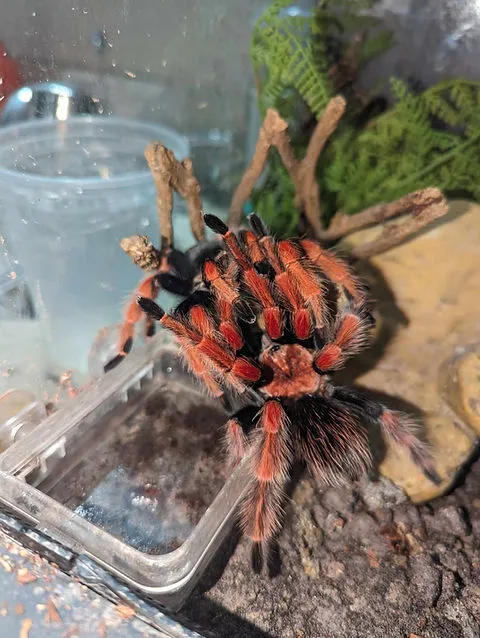What is a Mexican Fireleg Tarantula
The Mexican Fireleg Tarantula, scientifically known as Brachypelma boehmei, is a captivating species within the tarantula family, highly sought after by arachnid enthusiasts. Native to the Pacific coast of Mexico, this tarantula is celebrated for its striking appearance and relatively docile temperament, making it a popular choice for both novice and experienced keepers. Understanding the basics of this species is crucial before embarking on the journey of owning one, as it ensures the well-being of the tarantula and a rewarding experience for the owner. These tarantulas are known for their vibrant orange and red leg hairs against a black body, creating a stunning visual contrast that adds to their appeal. Their relatively calm demeanor, compared to some other tarantula species, contributes to their popularity as pets. The Fireleg’s life cycle, needs, and behaviors all must be understood prior to ownership.
Appearance and Characteristics
The Mexican Fireleg Tarantula is instantly recognizable by its vivid coloration. Adults display a deep black carapace and abdomen, contrasted by vibrant orange or red hairs on their legs, hence the name ‘Fireleg’. The coloration intensifies with age, making mature specimens even more striking. Their bodies are covered in urticating hairs, which they can flick off as a defense mechanism. Females are generally larger than males, with a lifespan that can extend over two decades in captivity. Firelegs are relatively slow-moving, terrestrial spiders. They prefer to dwell on the ground, either in burrows they create or under shelter. Their size can range from 5 to 7 inches in leg span, and their overall appearance is one of robust beauty.
Lifespan and Temperament
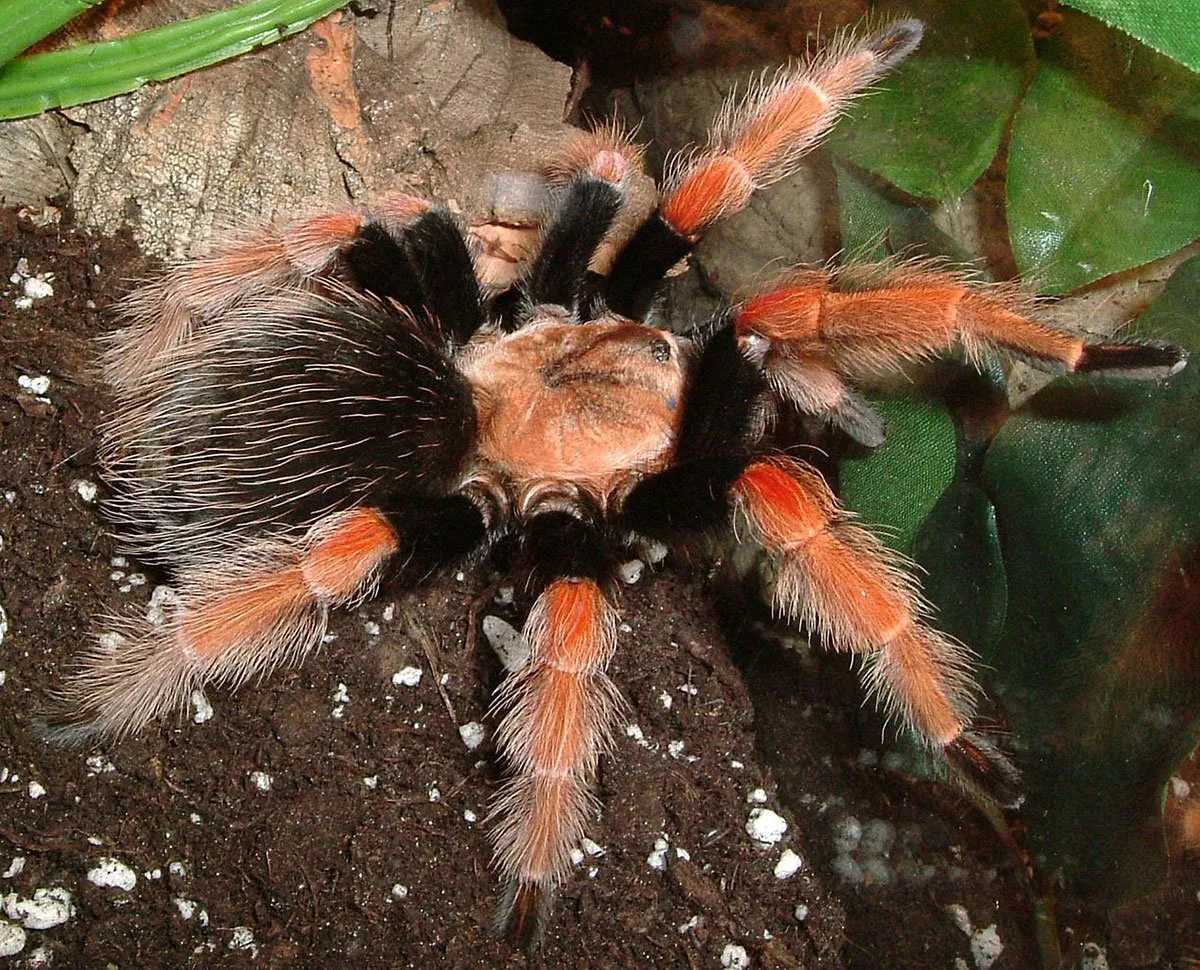
Mexican Fireleg Tarantulas have a considerable lifespan, particularly females. Females can live for 20-25 years or more when provided with proper care, making them a long-term commitment. Males, on the other hand, typically live for 5-10 years. Their temperament is generally docile, but like all tarantulas, they can be skittish and may flick urticating hairs as a defense. This makes them less prone to biting compared to some other species. Their relatively calm nature makes them a good choice for those new to tarantula keeping. However, all owners should exercise caution and respect their pet’s boundaries, ensuring a safe environment for both the tarantula and the handler.
Setting Up the Perfect Mexican Fireleg Tarantula Enclosure
Creating the ideal enclosure is fundamental to the health and well-being of your Mexican Fireleg Tarantula. A well-designed habitat provides the necessary elements for survival and allows your pet to exhibit natural behaviors. This involves selecting the right size tank, providing a suitable substrate, and maintaining the correct temperature and humidity levels. The enclosure must offer security, promote natural behaviors, and be easy to maintain. Proper setup minimizes stress on the tarantula and ensures they thrive in a captive environment. Careful attention to these details will significantly increase the chances of a healthy and long-lived tarantula.
Choosing the Right Tank
The size of the enclosure is crucial; it should be large enough to allow the tarantula to move freely but not so large that it feels insecure. A good starting point for an adult Mexican Fireleg is a tank that is approximately 10-20 gallons, measuring about 12x12x12 inches or larger. The enclosure should be wider than it is tall, as these tarantulas are terrestrial. Ensure the enclosure has a secure lid to prevent escapes. Glass or clear plastic enclosures are ideal, providing visibility and ease of cleaning. Adequate ventilation is also essential to prevent the buildup of mold and maintain the correct humidity levels. Always prioritize safety; a secure and appropriately sized enclosure is the foundation of tarantula care.
Substrate and Decor

The substrate serves as the floor of the enclosure and should allow the tarantula to burrow if it chooses. A mixture of peat moss, coconut fiber, and a little bit of vermiculite provides a good balance of moisture retention and drainage. The substrate should be deep enough (4-6 inches) for the tarantula to burrow comfortably. Decorating the enclosure with a hide, such as a cork bark or a half log, is essential for providing security and a place to retreat. Artificial plants can also be added for aesthetic appeal, but ensure they do not pose a hazard. Avoid using gravel or sharp objects, as these can injure the tarantula. Regularly spot-clean the substrate to remove any uneaten food or waste to maintain cleanliness and prevent the growth of bacteria and mold.
Temperature and Humidity
Mexican Fireleg Tarantulas thrive in a temperature range of 75-85°F (24-29°C). A heat source, such as an under-tank heater on one side of the enclosure, can help maintain the correct temperature gradient. The humidity level should be kept between 60-70%. This can be achieved by lightly misting the enclosure once or twice a week, depending on the humidity in your home. Use a hygrometer to monitor the humidity levels accurately. Poor temperature and humidity control can lead to health issues, such as dehydration or respiratory problems. Regular monitoring and adjustments are key to providing a healthy environment. Always keep a water dish accessible to provide fresh water.
Feeding Your Mexican Fireleg Tarantula
Proper feeding is critical to the health and growth of your Mexican Fireleg Tarantula. Understanding what to feed, how often to feed, and how to ensure hydration are all important aspects of tarantula care. A well-fed tarantula is a healthy tarantula, and a consistent feeding schedule helps provide the nutrients they need. Overfeeding should also be avoided as well as the feeding of anything that may harm them. Regularly monitoring their eating habits and adjusting the feeding schedule accordingly will help ensure they are getting what they need to thrive.
What to Feed
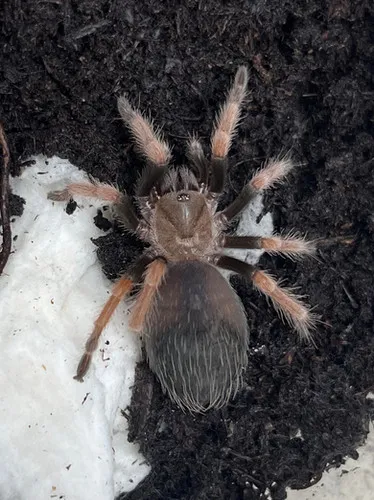
The primary diet for a Mexican Fireleg Tarantula consists of insects. Crickets, mealworms, and roaches are common and readily available options. The size of the prey should be appropriate for the tarantula; generally, it should be no larger than the tarantula’s body length. Gut-load the insects before feeding them to your tarantula, providing them with nutritious food, such as fruits and vegetables, for 24 hours before offering them to your pet. This enhances the nutritional value of the meal. Avoid feeding wild-caught insects, as they may carry parasites or pesticides. Occasionally, you can offer pre-killed prey to reduce the risk of injury to the tarantula. Always ensure any uneaten prey is removed from the enclosure to prevent stress and maintain cleanliness.
Feeding Frequency
The feeding frequency depends on the tarantula’s age and size. Spiderlings should be fed 2-3 times per week, while juveniles can be fed once or twice a week. Adult tarantulas can be fed once every 1-2 weeks. Adjust the feeding schedule based on the tarantula’s appetite and body condition. If the tarantula refuses to eat or becomes very plump, reduce the feeding frequency. Monitor your tarantula’s abdomen; a well-fed tarantula will have a slightly rounded abdomen. Always offer food, but do not force it to eat. Ensure that the tarantula is always able to access water, and provide fresh water in a shallow dish at all times.
Water and Hydration
Providing clean water is crucial for the hydration of your tarantula. Always have a shallow water dish available in the enclosure. The water dish should be shallow enough to prevent the tarantula from drowning. You may use a sponge or a few pebbles in the water dish to prevent the tarantula from falling in. Regularly replace the water to keep it fresh and prevent the growth of bacteria. Ensure the water dish is easily accessible and that the tarantula can reach it without difficulty. Dehydration is a serious threat to tarantulas, and access to fresh water is an essential part of their care.
Handling and Safety Precautions
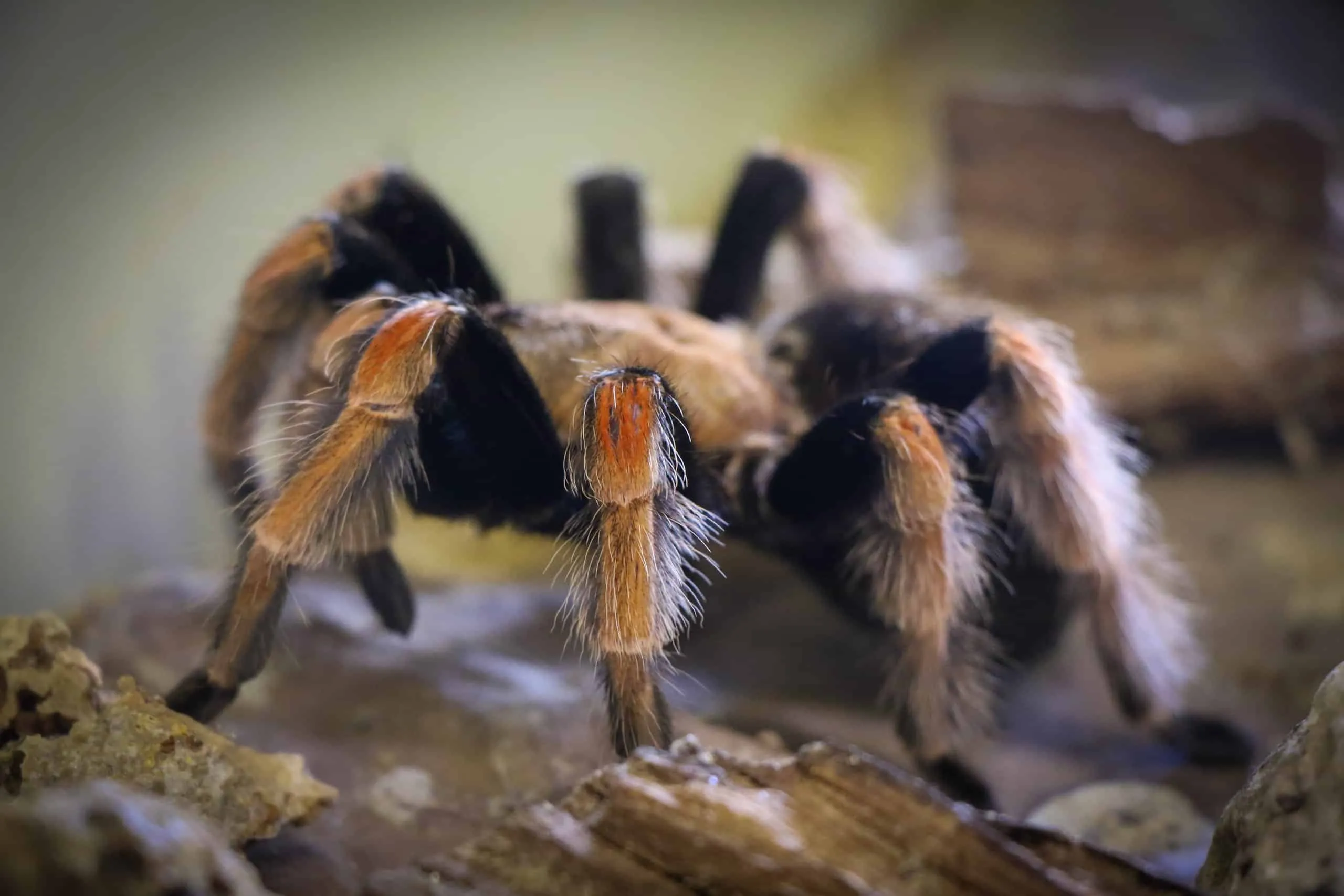
While Mexican Fireleg Tarantulas are known for their relatively docile temperament, it’s crucial to approach handling with caution and respect. Understanding tarantula behavior and implementing safe handling practices are vital to prevent injury to both the tarantula and the handler. Handling should be kept to a minimum and only attempted when necessary, such as for cleaning the enclosure or during health checks. Always prioritize the safety and well-being of the tarantula, minimizing stress and potential risks.
Understanding Tarantula Behavior
Tarantulas exhibit various behaviors that can indicate their mood and well-being. If a tarantula is startled, it might rear up on its hind legs as a defensive posture. Flicking urticating hairs from its abdomen is another defense mechanism. If the tarantula seems agitated or defensive, it is best to leave it alone. Understanding these behaviors helps in avoiding unnecessary stress and potential bites. Observe the tarantula’s movements and reactions, and be patient; they are not social creatures. Avoid sudden movements or loud noises, as these can startle them. The goal is to minimize stress and create a safe and calm environment.
Safe Handling Practices
If you need to handle your tarantula, do so with extreme care. Wash your hands before and after handling to avoid transferring any substances to the tarantula. Approach the tarantula slowly and gently. Encourage the tarantula to walk onto your hand rather than trying to pick it up. Avoid holding the tarantula for extended periods; keep handling sessions short. Do not drop or squeeze the tarantula. Keep the tarantula close to the ground in case it falls. After handling, thoroughly wash your hands. Always prioritize the tarantula’s safety; a calm, controlled environment is the key to safe handling.
Common Health Issues and Solutions
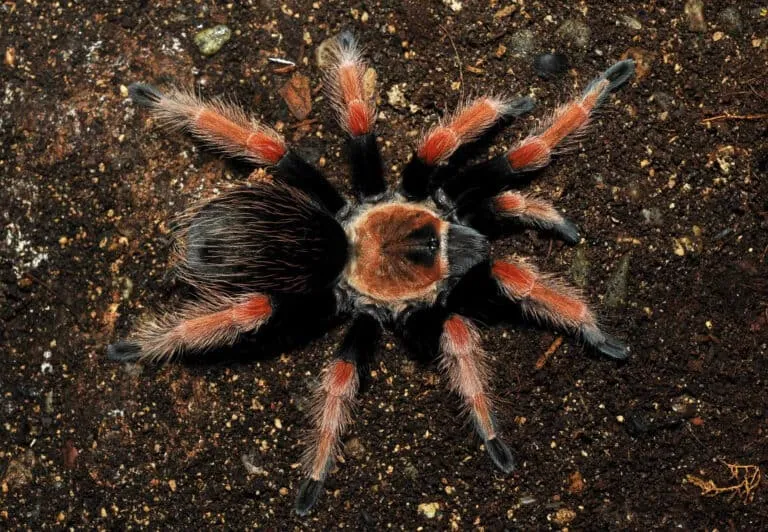
Like all living creatures, Mexican Fireleg Tarantulas can experience health problems. Understanding these issues and how to address them is essential for responsible pet ownership. Being aware of the molting process, recognizing potential illnesses, and knowing how to seek appropriate care are important aspects of tarantula care. Prompt and appropriate responses to health concerns ensure the tarantula’s well-being and extend its life expectancy. Regular monitoring and a proactive approach to health care can make a significant difference in the life of your tarantula.
Moulting Process
Moulting is a natural process where tarantulas shed their exoskeleton to grow. During this time, the tarantula will become less active and may refuse food. It will typically lie on its back. Do not disturb a tarantula during the molting process. Ensure the enclosure has sufficient humidity. After the molt, the tarantula will be soft and vulnerable; avoid handling it for several days. The old exoskeleton should be left in the enclosure; it may be consumed for nutrients. The molting process can be stressful, but it is a sign of healthy growth, and it should be celebrated, and not cause for alarm.
Recognizing and Treating Illness
Several signs may indicate a tarantula is unwell. These include loss of appetite, lethargy, unusual posture, and discoloration. If you notice any of these symptoms, carefully examine the enclosure for environmental issues, such as incorrect temperature or humidity. Check the water dish and substrate for cleanliness. If the issue persists, consult an experienced tarantula keeper or a veterinarian familiar with arachnids. Preventative care, like proper diet and environmental conditions, is the best defense. A healthy tarantula is a happy tarantula, and addressing any health issues early can help ensure a good quality of life.
Conclusion
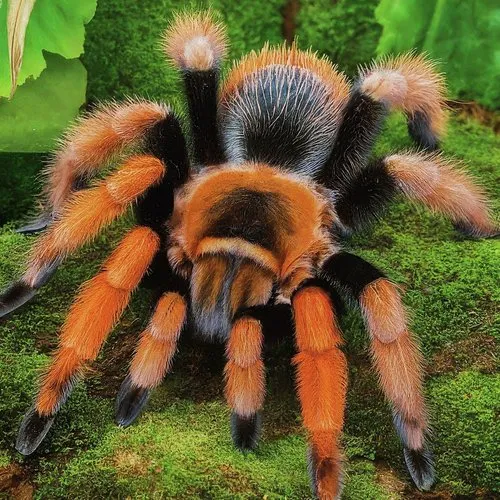
Caring for a Mexican Fireleg Tarantula can be a rewarding experience, providing a unique opportunity to observe these fascinating creatures. By understanding their needs, including proper enclosure setup, feeding, and handling, you can ensure a healthy and fulfilling life for your pet. This guide offers the information you need to become a successful tarantula keeper. Enjoy the journey of learning and caring for your Mexican Fireleg. By following these guidelines, you’ll be well on your way to a rewarding relationship with one of nature’s most captivating arachnids.
